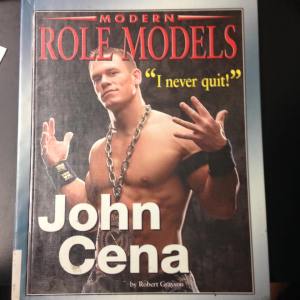Way back in the very beginning of Operation Skybrary, I rolled up my sleeves and stared down the four heaping shelves in the English classroom. They contained about five hundred books between them, a vague mélange of fiction and nonfiction that the school had haphazardly accumulated over the years. The library was filled with real literary gems. But it was also filled with books that seemed to have appeared purely by accident, as though a book god once sneezed and inadvertently populated our shelves with musty 1980s problem novels and comic books in Japanese.
The collection was little used by the student body—partly, everything was so crammed in and disorganized that the individual identities of the books were rendered invisible. Additionally, the presence of so many out-of-date or developmentally inappropriate texts were devaluing our users’ view of our entire collection. These problems were only exacerbated as donations began coming in. It was time for a weeding.
Weeding is the way libraries keep their collections relevant, current, and usable. For those tiptoeing into the profession for the first time, especially those entering librarianship out of a reverent love of books, the prospect of getting rid of books may induce chest-clutching and hang-wringing. I’m sorry, my darlings. Ready your spoonsful of sugar so that you may swallow this medicine: INDIVIDUAL BOOKS ARE NOT PRECIOUS. A healthy, relevant, usable collection (and, by extension, a happy, engaged, informed community) is.
In weeding my would-be collection, I used the popular MUSTIE criteria:
M= Misleading: factually inaccurate
U= Ugly: worn beyond mending or rebinding
S= Superseded by a new edition of by a much better book on the subject
T= Trivial: of no discernible literary or scientific merit
I= Irrelevant to the needs and interests of the library’s community
(E= Elsewhere: the material is easily obtainable from another library)*
(from http://lili.org/forlibs/ce/able/course4/05criteria.htm)
*E is in parentheses here because the Skybrary is not part of a school or public library system, and therefore items are not easily obtainable by this library from another library. (But without it, the word is MUSTI, which seems like the name of a high school sitcom character in the 90s.)
There’s a lot in this little acronym, all of it useful. Old and beaten paperbacks of easily obtainable classics were pulled from the collection. So, too, were business books written before the advent of e-mail, an operator’s manual for a riding mower, and a travel book about beautiful Czechoslovakia.
The most difficult letter to navigate is, at least in my mind, the I: “Irrelevant to the needs and interests of the community.” This may include books that are not academically or developmentally appropriate for your students. It may also include books that your students are capable of reading, but just plain aren’t interested in. Breastfeeding guides, witty comedies about the misadventures of dating in one’s 40s, or books on middle management may fall into this category, for example—or not. Get to know your community, and have a sense of what’s of interest to this age group.
Remember, a great librarian engages in what is commonly referred to as the CREW method: Continuous Review, Evaluation and Weeding. Your library is a living, breathing entity. Checking in on it regularly, rather than once a year, will keep it healthy.
What’s the best thing you’ve weeded? Share below!



